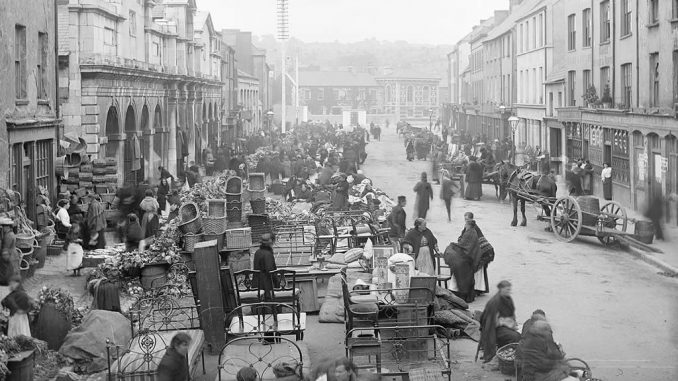
The many dairy farms of Ireland’s largest county, with low mountains and evergreen plantations, are often overlooked by visitors. The 170km long coastline also offers much variety, including the pretty port of Kinsale, full of reminders of Cork’s seafaring past, and the Sheep’s Head peninsula where one can wander and explore to their heart’s content.
Cork city, the capital of the self-styled “rebel county”, is well known for its independent spirit, with much to offer both culturally and socially in its compact, vibrant centre, located on an island in the Lee estuary. Its popular restaurants, cafés and the famous English Market ensure that Cork’s culinary reputation is recognised around the world, both inside and outside the city. It is well aware of this reputation too, giving it a particular energy and confidence. During Cork City history, inhabitants of the ‘Rebel City’ have long seen themselves as equally deserving of the attention given to Dublin, citing its arts and music scene as being a worthy rival to that of the capital’s.
Cork City History in its Streets and Buildings
Narrow 17th century alleyways and modern landmarks such as the opera house sit beside each other in the centre of the city, which was given a new energy when it became the European Capital of Culture in 2005. More new buildings, bars and arts centres ensure that this new vigour continues apace. Despite this, the city has not forgotten its traditional roots, evident in the live music sessions held in snug pubs during the week, and the ready welcome given by locals. Excellent local product is provided by the new restaurants which regularly spring up around the city.
In the 7th century St Finbarre founded a monastery on a corcach (marshy place), and hence began the foundations of a city which saw its fair share of turbulence throughout the following centuries. During this time it saw raids and sporadic settlement by the Vikings, eventually becoming the principal city of the Kingdom of South Munster. By 1185, however, the British had conquered Cork and it was subsequently won and lost over and again by both sides during Ireland’s continuing fight for independence from the Crown. Cromwell’s attempted raid was defeated, but it was no match for the mighty William of Orange, champion of Protestantism.
Cork became an international exporter of butter, beef, beer and whiskey during the 18th century, but the potato famine ended this period of prosperity. Millions were forced to emigrate, as their choices were reduced to a new life abroad or starvation.
Cork was a key player in Ireland’s fight for Independence, due mainly to its patriotic ethos. It counts amongst its home grown heroes Mayor Thomas MacCurtain, killed by the Black and Tans in 1920 and his successor, Terence MacSwiney, who died in London’s Brixton prison after a hunger strike.
The British were at their most aggressive in Cork, and St Patrick’s St, the City Hall and the Public Library bore the brunt of this agression when they were torched. The Civil War of 1922-23 was fought mainly in the fields of Cork.
